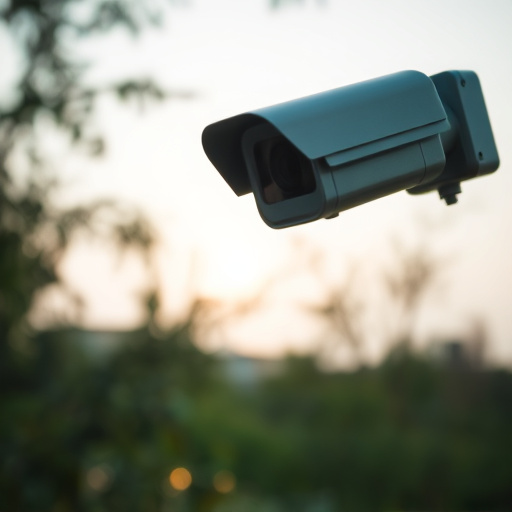Motion-activated spy cameras disguised as everyday objects offer covert security, with battery life varying based on resolution and sensor sensitivity (months to over a year). Energy-saving modes, adjusted sensitivity, and solar charging extend lifespan. Regular checks and replacements are vital for continuous surveillance in critical locations, while legal and ethical considerations ensure responsible use, respecting privacy.
Hidden surveillance devices, particularly motion activated spy cameras, have become increasingly prevalent. This article explores the intricacies of these covert observers, focusing on their surprising battery life and common locations within both private residences and public spaces. We’ll guide you through understanding how they operate, uncovering hidden spots, and delving into legal and ethical considerations surrounding their use. Prepare to explore a world where privacy is not what it seems.
- Understanding Motion Activated Spy Cameras and Their Battery Life
- Common Spots for Hidden Surveillance Devices in the Home
- Uncovering Discreet Camera Placement in Public Spaces
- Legal Considerations and Ethical Use of Hidden Surveillance Devices
Understanding Motion Activated Spy Cameras and Their Battery Life
Motion activated spy cameras, often disguised as everyday objects like rocks or plants, are a popular choice for home and business security due to their covert nature. These devices are designed to capture footage only when motion is detected, conserving battery life and ensuring efficient surveillance. The battery life of these cameras varies widely depending on factors such as the camera’s resolution, sensitivity settings, and environmental conditions. High-definition cameras with more sensitive motion sensors may drain batteries faster than lower-resolution models with less sensitive settings.
Understanding the typical battery life of a motion activated spy camera is crucial for prospective users. Manufacturers often provide estimates ranging from several months to over a year based on average usage. However, these can vary significantly in real-world scenarios. Using energy-saving modes, adjusting sensitivity levels, and taking advantage of solar charging options (if available) can all contribute to extending the lifespan of the device’s battery. Regularly checking and replacing batteries, especially in critical security locations, is essential to ensure continuous surveillance without unexpected outages.
Common Spots for Hidden Surveillance Devices in the Home
In today’s digital era, folks are becoming increasingly cautious about their privacy, especially within their own homes. One way to safeguard personal spaces is by being aware of common spots where hidden surveillance devices might be installed. These devices, often disguised as everyday objects, can include motion-activated spy cameras with impressive battery life, designed to capture and transmit footage without raising suspicion.
Such devices are frequently tucked away in inconspicuous locations like under furniture, inside cabinets, or behind picture frames. Other common areas include near entry points such as doors and windows, where they can detect movement and record intruders or unauthorized access attempts. Additionally, ceiling corners and wall cavities provide easy hiding spots for these tiny but powerful tools designed to monitor activities within the home.
Uncovering Discreet Camera Placement in Public Spaces
Uncovering hidden cameras in public spaces has become an important aspect of digital privacy awareness. One common type of device used for surveillance is the motion-activated spy camera, designed to blend into its surroundings. These tiny gadgets are often placed in areas where their presence might be least expected. From discreetly mounted on streetlights and trash cans to hidden inside fake rocks or plants, these cameras can capture footage for extended periods before their battery life depletes.
Public spaces like parks, streets, and shopping centers may seem innocuous, but they could be hosting these covert recorders. It’s crucial to be vigilant and aware of potential surveillance, especially with the advancements in technology making these devices smaller, more power-efficient, and harder to detect. The battery life of motion-activated spy cameras is a key factor—longer battery life allows them to operate continuously for days or even weeks, capturing video footage without being noticed.
Legal Considerations and Ethical Use of Hidden Surveillance Devices
The use of hidden surveillance devices, often referred to as motion-activated spy cameras, raises important legal and ethical considerations. While these devices can provide valuable security and peace of mind, their deployment must adhere to strict guidelines. In many jurisdictions, there are laws protecting privacy rights, dictating that any form of surveillance should be conducted with transparency and legitimate reasons. For example, hidden cameras in common areas like bathrooms or changing rooms are generally prohibited without explicit consent due to the sensitivity of personal spaces.
Additionally, ethical use demands respect for individual privacy. Motion-activated spy cameras should only be utilized in areas where there’s a reasonable expectation of privacy, such as private residences or specific work zones. Using these devices in public spaces or places where individuals have no reason to expect privacy could lead to serious ethical dilemmas and potential legal repercussions. Battery life is also a factor; devices with longer battery durations ensure continuous monitoring without frequent replacement, but they must be installed responsibly to avoid intruding on personal activities.
Hidden surveillance devices, especially motion activated spy cameras, have evolved to offer improved battery life, making them versatile tools for both home and public space monitoring. From common household areas like kitchens and bedrooms to outdoor locations such as gardens and parking lots, these discreet devices are transforming the way we perceive security. However, it’s crucial to navigate their use within legal boundaries and ethical considerations, ensuring privacy rights are respected while leveraging their capabilities for enhanced safety and peace of mind.
